Elgaria coerulea
—
Northern Alligator Lizard
Subspecies I've seen:
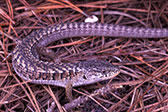
E. c. coerulea
San Francisco Alligator Lizard
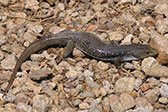
E. c. palmeri
Sierra Alligator Lizard

E. c. principis
Northwestern Alligator Lizard
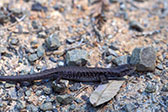
E. c. shastensis
Shasta Alligator Lizard
Elgaria coerulea coerulea
—
San Francisco Alligator Lizard
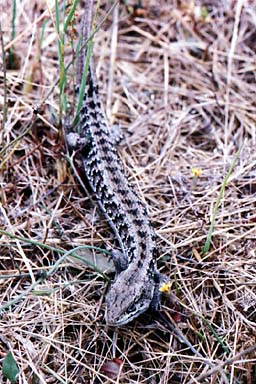
Alligator lizards are probably the second most common lizard where I live on the central coast of California, after western fence lizards, so they don't seem too exciting to me. But I suppose if you lived where alligator lizards didn't you'd think differently!

Most of the alligator lizards I see are in the thick of twiggy bushes, presenting a photographic challenge. This cooperative fellow was under a log but chose to pose for me when uncovered.
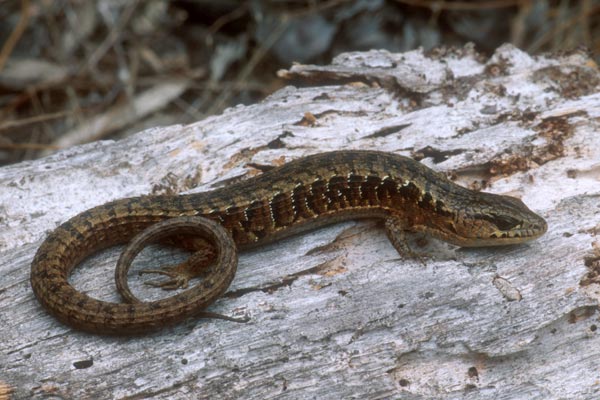
I found this lizard under a log on a coolish day. It was willing to pose for me atop the log it had been under.
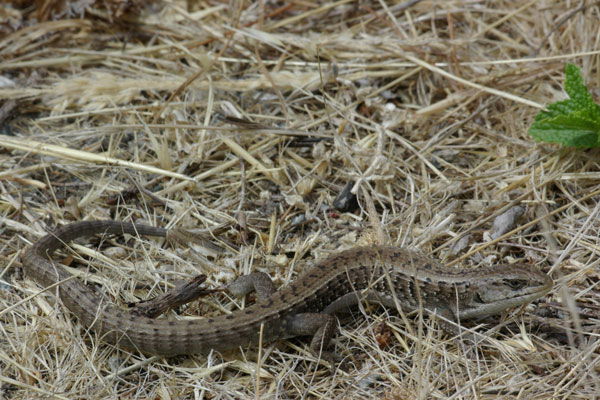
Angie Harer found both of this day's two alligator lizards. The other one was larger, but it bustled off noisily into the bushes. This young adult was more willing to sit still for a few photos.
Elgaria coerulea palmeri
—
Sierra Alligator Lizard

We visited Indian Pools Trail on a drizzly afternoon primarily so that our larger dog Champ could do some splashing to get his mind off of the long bumpy car ride over Kaiser Pass that we had just concluded. In the parking lot I saw something vaguely lizard-shaped scuttle under a bush, and following it a bit revealed that it was an alligator lizard with a very stumpy tail (broken off and just starting to regenerate). However, its scuttling was too much for me, and I couldn't get a photo. Later, while hiking along the creek, I turned over a hunk of bark and uncovered an alligator-lizard-shaped shed skin. This inspired me to turn over many, many hunks of bark near a large fallen tree. I found five more alligator-lizard-shaped shed skins before catching a brief glimpse of another stumpy-tailed individual escaping from me. That one did not put in another appearance, but a couple of dozen hunks of bark later I saw this third one, with a slightly longer (but still regrown and short) tail. This one did not evade my camera.
Elgaria coerulea principis
—
Northwestern Alligator Lizard
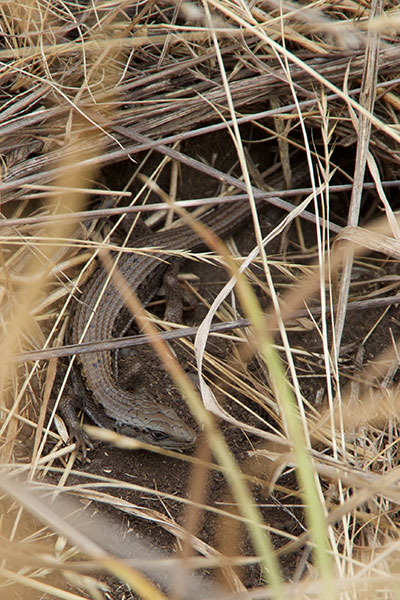
On a cool, overcast morning, most lizards would not have bothered coming to the surface. But it must have been just warm enough for this tough little lizard to try a little mostly-concealed basking. I spotted it as we walked past, and managed to take exactly two photos before it decided that avoiding the big hulking monster with a camera was more important than gaining a degree or two of body temperature, and down a burrow it vanished.
Elgaria coerulea shastensis
—
Shasta Alligator Lizard

This medium-sized alligator lizard is colored and patterned like an adult, but is only about half of its eventual size. I had a look at its belly to determine that it was a Northern Alligator Lizard and not a Southern one.
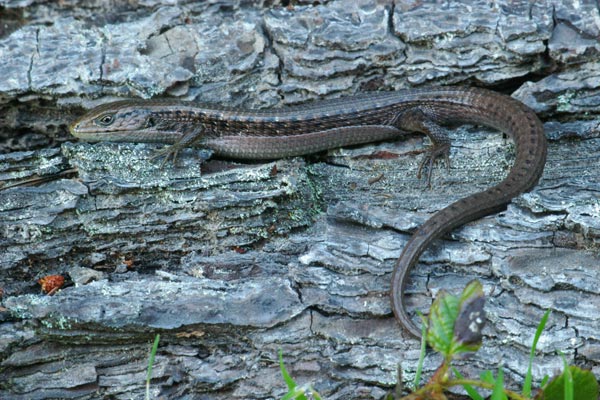
At this wet time of year most of the herps lurking under logs were salamanders, but this alligator lizard added a little diversity.
Online references:
- Elgaria coerulea coerulea account on CaliforniaHerps.com
- Elgaria coerulea palmeri account on CaliforniaHerps.com
- Elgaria coerulea shastensis account on CaliforniaHerps.com
Printed references:
- Basey, H. E. 1976. Discovering Sierra Reptiles and Amphibians
- Behler, J. L., King, F. W. 1979. The Audubon Society Field Guide to North American Reptiles & Amphibians
- Crother, B. I. (ed.) 2017. Scientific and Standard English Names of Amphibians and Reptiles of North America North of Mexico, with Comments Regarding Confidence in Our Understanding, Eighth Edition
- Schoenherr, A. A. 1992. A Natural History of California
- Smith, H. M. 1995. Handbook of Lizards: Lizards of the United States and Canada
- Smith, H. M., Brodie, E. D. Jr. 1982. Reptiles of North America: A Guide to Field Identification
- Stebbins, R. C. 2003. Peterson Field Guide to Western Reptiles and Amphibians, Third Edition